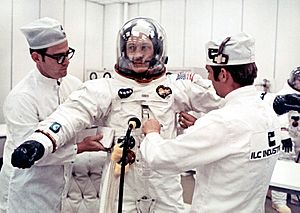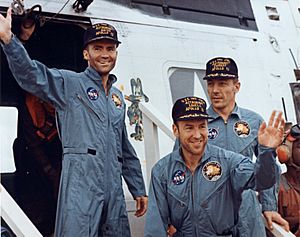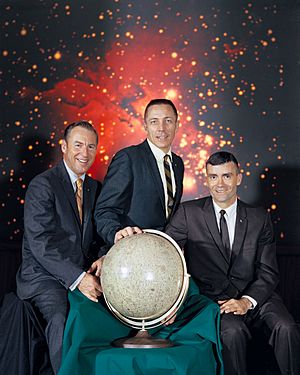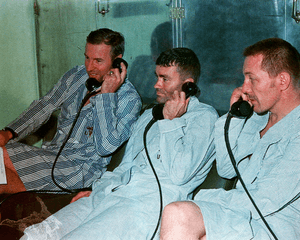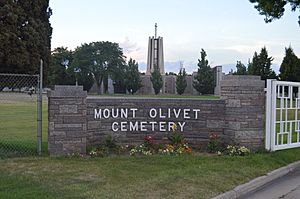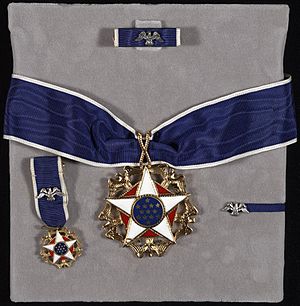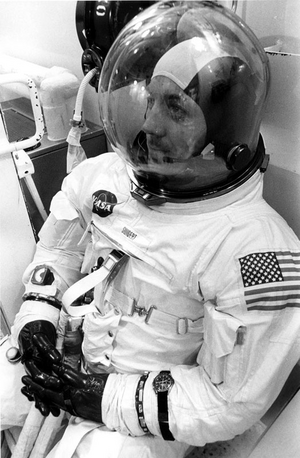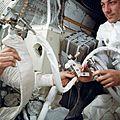Jack Swigert facts for kids
Quick facts for kids
John L. Swigert Jr.
|
|
|---|---|
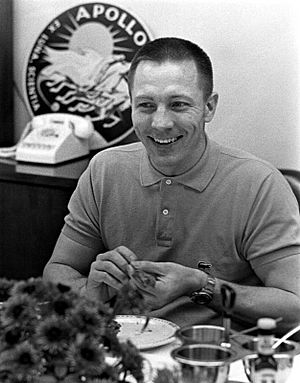
Swigert in April 1970
|
|
| Member-elect of the U.S. House of Representatives from Colorado's 6th district |
|
| In office November 2, 1982 – December 27, 1982 |
|
| Preceded by | Constituency established |
| Succeeded by | Daniel Schaefer |
| Personal details | |
| Born | August 30, 1931 Denver, Colorado, U.S. |
| Died | December 27, 1982 (aged 51) Washington D.C., U.S. |
| Resting place | Mount Olivet Cemetery, Wheat Ridge, Colorado |
| Nationality | American |
| Political party | Republican |
| Parents | John L. Swigert, M.D. Virginia Swigert |
| Alma mater | University of Colorado, B.S. 1953 Rensselaer Polytechnic Institute, M.S. 1965 University of Hartford, MBA 1967 |
| Occupation | Fighter pilot, test pilot |
| Military service | |
| Allegiance | |
| Branch/service | U.S. Air Force (1953–1956) MA ANG (1957–1960) CT ANG (1960–1965) |
| Years of service | 1953–1965 |
| Rank | |
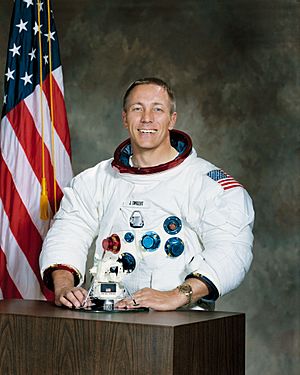 |
|
| Nationality | American |
| Occupation | Fighter pilot, test pilot |
| Awards | |
| Space career | |
| NASA astronaut | |
|
Time in space
|
5d 22h 54m |
| Selection | 1966 NASA Group 5 |
| Missions | Apollo 13 |
|
Mission insignia
|
|
| Retirement | August 1977 |
John Leonard "Jack" Swigert Jr. (born August 30, 1931 – died December 27, 1982) was an American astronaut. He was also a test pilot, an engineer, and a pilot for the United States Air Force. Swigert was one of only 24 people who have traveled to the Moon.
Before joining NASA in 1966, Swigert worked as a civilian test pilot. He also flew fighter jets for the Air National Guard. After leaving NASA, he was elected to the U.S. House of Representatives for Colorado. Sadly, he passed away before he could officially start his new job.
Contents
Early Life and Education
Jack Swigert was born in Denver, Colorado. When he was 14, he became very interested in flying. He loved watching planes take off from a nearby airfield. Young Jack decided he wanted to do more than just watch.
He got a newspaper delivery job to earn money for flying lessons. By the time he was 16, he had his own pilot's license.
Swigert earned a degree in Mechanical Engineering in 1953. He also played football for the Buffaloes team. Later, he earned more degrees in Aerospace Engineering and Business.
He enjoyed many sports like golf, handball, bowling, skiing, swimming, and basketball. He also loved photography. As a boy, he was a member of the Boy Scouts of America.
Flight Experience
After college in 1953, Swigert joined the U.S. Air Force. He became a fighter pilot and served in Japan and Korea. In Korea, he had a close call. His plane crashed and caught fire, but he walked away with only minor injuries.
After his active duty, he continued to fly jet fighters. He served with the Massachusetts Air National Guard and the Connecticut Air National Guard. Before joining NASA, Swigert was an engineering test pilot. He flew over 7,200 hours in planes, with more than 5,725 hours in jet aircraft.
NASA Career
Swigert tried to join NASA's astronaut program twice before. Finally, in April 1966, he was accepted into the NASA Astronaut Corps. He became an expert on the Apollo Command Module. He was one of the few astronauts who specifically wanted to be a command module pilot.
Apollo 13 Mission
Swigert was one of three astronauts on the Apollo 13 mission. This mission launched on April 11, 1970. He was originally part of the backup crew. However, he was assigned to the mission just three days before launch. He replaced astronaut Ken Mattingly. The main crew had been exposed to German Measles. Since Mattingly had no immunity, NASA didn't want him to get sick during the flight.
Apollo 13 was supposed to be the third mission to land on the Moon. But it had to be stopped after an oxygen tank exploded. This happened in the spacecraft's service module. Swigert was the astronaut who famously said, "Houston, we've had a problem here." The mission commander, Jim Lovell, repeated the message.
Swigert, along with Lovell and Fred Haise, returned safely to Earth. They landed on April 17, after almost 6 days in space. The very next day, they received the Presidential Medal of Freedom.
After NASA
In April 1973, Swigert took a break from NASA. He became the executive director for a science committee in the U.S. House of Representatives.
He eventually left NASA and the committee in August 1977. He decided to enter politics. In 1979, he became a vice president at a company called B.D.M. Corporation. Later, in 1981, he joined another company, International Gold and Minerals Limited.
In February 1982, Swigert left that company to run for U.S. Congress. He ran as a Republican. On November 2, 1982, Swigert easily won the election. He won with 64% of the votes in Colorado's new 6th congressional district.
Later Life and Passing
In 1982, during his political campaign, Swigert became ill. He developed a serious growth in his nose. He had surgery, but the illness spread to his bones and lungs.
Seven weeks after winning the election, he was flown to a hospital in Washington, D.C. He passed away on December 27, 1982. He was 51 years old. This was just eight days before he was supposed to start his term in Congress. He is buried in Mount Olivet Cemetery in Wheat Ridge, Colorado.
Awards and Honors
Jack Swigert received many awards for his achievements:
- American Institute of Aeronautics and Astronautics (AIAA) Octave Chanute Award in 1966.
- Presidential Medal of Freedom in 1970.
- NASA Distinguished Service Medal.
- American Astronautical Society Flight Achievement Award in 1970.
- Gold Medals from the cities of New York City, Houston, and Chicago in 1970.
- University of Colorado-Boulder's Distinguished Engineering Alumnus Award in 1970.
- AIAA Haley Astronautics Award in 1971.
- Antonian Gold Medal in 1972.
Legacy and Recognition
Jack Swigert is remembered for his bravery and contributions to space exploration:
- In 1983, he was added to the International Space Hall of Fame.
- In 1988, he was inducted into the Colorado Aviation Hall of Fame.
- In 1995, actor Kevin Bacon played Swigert in the movie Apollo 13.
- In 1997, a statue of Swigert was placed in the U.S. Capitol Building. It is one of two statues given by Colorado to the National Statuary Hall Collection. Another copy of the statue is at Denver International Airport.
- In 1997, Jack Swigert was inducted into the U.S. Astronaut Hall of Fame.
- In 2003, he was elected to the Rensselaer Polytechnic Institute Alumni Hall of Fame.
- In 2004, the Space Foundation created the John L. "Jack" Swigert Jr. Award for Space Exploration. This award honors people who have made big contributions to space exploration.
- In 2009, the Jack Swigert Aerospace Academy was opened in Colorado Springs.
Images for kids
See also
 In Spanish: Jack Swigert para niños
In Spanish: Jack Swigert para niños


